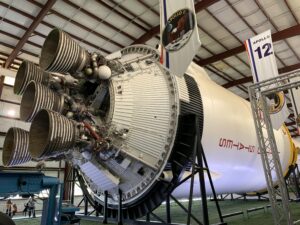Imagine a version of you living in a world where every decision you’ve ever made unfolded differently. Parallel universes, or the multiverse theory, suggest such alternate realities could exist alongside ours. These theories explore how choices—big or small—might split paths into multiple dimensions. Quantum reality, as studied in physics, hints at branching timelines where every possibility becomes real somewhere.

Today, scientists and thinkers debate whether these ideas are science fiction or scientific truth. This article breaks down the science behind alternate realities, their philosophical questions, and why the concept captivates minds worldwide. Could your “what if” moments actually be lived by another you in an unseen world?
Key Takeaways
- Parallel universes propose endless realities where life’s paths diverge.
- Multiverse theory challenges how we understand space, time, and existence.
- Alternate realities might explain puzzles in quantum physics and everyday choices.
- Multiple dimensions could hold infinite versions of people making different decisions.
- Exploring quantum reality opens doors to understanding the multiverse’s potential.
The Mind-Bending Concept of Parallel Universes
Imagine worlds where every choice you’ve ever made leads to endless paths. This is the essence of the multiverse concept. It suggests that parallel dimensions might exist beyond what we can see. Scientists delve into this using theoretical physics to uncover what’s beyond our universe.
What Exactly Are Parallel Universes?
A parallel universe is a reality with its own laws and history. Some theories propose that these parallel dimensions could exist in higher dimensions, like separate pages in a book. The quantum multiverse idea suggests that every quantum event creates new branches of reality.
Why Scientists Take This Idea Seriously
Researchers like cosmologist Max Tegmark believe the multiverse concept explains why our universe is perfect for life. Here’s why it’s gaining attention:
- Mathematical models suggest there’s no end to the universe, hinting at endless space.
- Quantum experiments show particles can exist in multiple states until observed, supporting branching realities.
The Difference Between Parallel Universes and Alternate Timelines
Many confuse alternate timelines with true parallel universes. Here’s the main difference:
| Parallel Universes | Alternate Timelines |
|---|---|
| Entirely separate realities with unique histories and physics | Branching paths within a single universe (like “what if I took that job?”) |
“The quantum multiverse isn’t just philosophy—it’s a testable idea.” – Sean Carroll, Caltech physicist
Scientific Theories That Support Multiple Realities
Cosmic inflation theory suggests our universe started from a tiny speck and expanded rapidly. This growth could have created bubble universes like bubbles in a foam. Each bubble might have its own set of physical laws. Scientists, like Alan Guth, study these theories mathematically, showing endless bubbles could form beyond what we can see.

Leading scientific theories group multiverse ideas into four levels. These include:
- Level I: Distant regions of our universe too far to see
- Level II: Bubble universes branching from cosmic inflation
- Level III: The many-worlds interpretation of quantum choices
- Level IV: Mathematical structures defining reality itself
The many-worlds interpretation suggests every quantum decision splits reality. MIT’s Hugh Everett proposed this in 1957. He believed all outcomes exist in separate branches. This idea matches equations showing parallel paths persisting, not collapsing into one result.
“The multiverse isn’t just philosophy—it’s a testable framework,” says cosmologist Max Tegmark. “These scientific theories challenge how we define ‘reality.’”
While we still lack proof, cosmic inflation models predict patterns in the cosmic microwave background. Future telescopes might find evidence of collisions between bubble universes. These ideas are changing physics, making us question if our universe is alone.
Quantum Physics and the Many-Worlds Interpretation
Quantum mechanics shows us a universe that’s truly bizarre. At its heart is the many-worlds theory, which sees reality as a vast tree of possibilities. This theory shakes up old physics by saying that particles don’t settle into one state. Instead, every choice creates a new universe.
Schrödinger’s Cat: A Paradox in a Box
Erwin Schrödinger’s famous thought experiment puts a cat in a box. The cat’s fate is tied to quantum decay. It’s in a state of being both alive and dead until someone looks inside. This shows how particles can be in many states at once, a key part of quantum theory.
Branching Realities: How Choices Multiply
- Every quantum event has countless possible outcomes
- Instead of collapsing into one result, all outcomes become new realities
- Over time, this creates an ever-expanding multiverse of parallel existences
Scientists Divided on Quantum Reality
Hugh Everett III introduced the many-worlds theory in 1957, saying no to wave function collapse. Nobel winner Richard Feynman later supported it, calling it “a way of thinking about nature.” Today, scientists like Max Tegmark and Sean Carroll keep exploring it, but opinions are still split. Some say it’s too hard to test, while others praise its beauty.
“The universe is not only stranger than we imagine—it is stranger than we *can* imagine.”
These ideas change how we see existence. Whether reality splits with every quantum choice or stays the same depends on our math interpretation.
Parallel Universes: What If There’s Another You in a Different Reality?
Every choice you make could split your path into infinite divergent realities. Imagine a version of you who took a different job, moved to another city, or said yes to an invitation you declined. These alternate selves might be living entirely different parallel lives, shaped by decisions big and small.

The Infinite Versions of You Theory
Every time you choose coffee over tea, or stay home instead of going out, a new reality branches off. This means your quantum decision making—even tiny acts—creates a universe where your alternate self exists in a different timeline. Scientists like Hugh Everett’s many-worlds interpretation suggest this happens at quantum levels, multiplying possibilities endlessly.
How Small Choices Might Create Divergent Realities
- Picking a college major could mean your alternate self is a chef instead of an engineer.
- A missed text message might lead to a career shift in another reality.
- Every “what if?” moment becomes a parallel life someone else is living.
The Butterfly Effect Across the Multiverse
A single decision—like attending a party—could set off changes as dramatic as the butterfly effect. In one reality, you meet a future partner there; in another, you never go, altering relationships, careers, and futures. These ripples mean no choice is too small to spawn entirely new realities.
“Your life is just one thread in a tapestry of infinite possibilities.”
Contemplating these ideas, you’re reminded that every action ripples through the multiverse, shaping countless alternate selves you’ll never meet but might wonder about.
String Theory and the Possibility of Membrane Universes
String theory changes how we see the world’s basics. It says everything is made of tiny vibrating strings. These strings live in a world with extra dimensions that are not like our 3D space. This theory suggests our universe is much more complex than we think, needing up to 11 dimensions.
Think of our universe as a “membrane universe”—a 3D slice in higher-dimensional space. Brane cosmology says these membranes (or branes) could crash into each other. This could have caused the Big Bang. This idea comes from M-theory, which combines earlier string theories. It shows that universes could exist as separate branes.
Here’s how it works:
- Extra dimensions let branes move through a higher-dimensional “bulk.”
- Collisions between branes might reset cosmic timelines.
- Observing these membrane universes
Though still just ideas, these concepts make us think of reality as a complex, layered structure. Scientists like Edward Witten’s work on M-theory keep the debate alive about what’s beyond our universe.
How Pop Culture Has Shaped Our Understanding of Parallel Universes
Pop culture makes complex physics into stories that inspire wonder. Multiverse movies and alternate reality entertainment let us explore “what if?” scenarios. This makes science feel personal. From theaters to bookshelves, these tales mix imagination with theory, shaping how we picture endless possibilities.

Influential Movies About Parallel Realities
| Movie | Year | Key Contribution |
|---|---|---|
| Doctor Strange | 2016 | Showed mystical multiverse movies as cosmic battlegrounds |
| Everything Everywhere All at Once | 2022 | Blended chaos and heart to visualize infinite alternate reality entertainment |
| Sliding Doors | 1998 | Used everyday choices to show branching timelines |
Books That Explore Multiple Universe Concepts
- The Garden of Forking Paths by Jorge Luis Borges laid groundwork for multiverse literature with its maze-like narrative
- Blake Crouch’s Dark Matter uses parallel universe fiction to explore identity shifts
- Terry Pratchett’s Long Earth series imagines parallel worlds through sci-fi predictions
How Science Fiction Predicted Scientific Theories
Authors like H.G. Wells and Philip K. Dick imagined ideas later studied by scientists. Their stories often mirror real theories:
| Sci-Fi Work | Prediction | Scientific Connection |
|---|---|---|
| H.G. Wells’ The Time Machine | Time as a dimension | Inspired Einstein’s relativity |
| Philip K. Dick’s Man in the High Castle | Alternate histories | Early concepts behind quantum multiverse hypotheses |
These stories don’t just entertain—they challenge minds to question what’s possible.
The Philosophical Implications of Infinite Realities
Exploring the multiverse philosophy raises big questions about who we are and what choices mean. The idea of countless realities makes us question our identity and the ethics of our actions.

Questions of Identity in a Multiverse
If every decision creates new universes, what makes you, you? Philosophers argue if identity is fixed to one path or if it spreads across all versions. Does being “you” change if another version of you makes different choices? This question makes us rethink what it means to be an individual.
Free Will vs. Determinism Across Parallel Worlds
Quantum free will theory says every choice splits reality, making decisions seem predetermined. Einstein once said, “God does not play dice with the universe,” but quantum physics might disagree. Does the idea of branching realities mean our choices are just following paths? Or does it show that free will is real?
Moral Responsibility in a Universe of Infinite Choices
- In parallel world ethics, if every immoral action occurs somewhere, does that absolve guilt for bad choices in this world?
- Could compassion grow if we realize others’ suffering exists in some realities?
- Legal systems and ethics face upheaval when infinite outcomes already exist.
These ideas make us look at life’s biggest mysteries with new eyes. Science and philosophy come together to redefine humanity’s role in existence.
Could We Ever Prove Parallel Universes Exist?
Can we ever find parallel universe evidence? Scientists are looking for ways to spot other universes. They use experimental physics and cosmic signals to search for clues.
The cosmic microwave background (CMB) is a key area of study. It’s the oldest light in our universe. Scientists look for signs of other universes in its patterns.
Another area of research is gravitational waves. These are ripples in space and time. Detectors like LIGO might find waves from other universes.
- CMB scans for collision “bruises” in ancient light
- Gravitational wave detectors listening for multiverse signals
- Lab experiments testing quantum links between realities
“The multiverse could leave fingerprints even if we can’t directly see other universes,” says cosmologist Hiranya Peiris. “We’re like archaeologists hunting traces of a civilization we can’t visit.”
| Method | Goal | Status |
|---|---|---|
| CMB Analysis | Identify collision imprints | Ongoing global surveys |
| Gravitational Wave Studies | Track inter-universe disturbances | Preliminary data review |
| Quantum Experiments | Measure cross-universe particle behavior | Early-stage trials |
While we have no proof yet, scientists keep making progress. New telescopes and detectors give us hope. Each multiverse detection effort helps us learn more, even if we can’t see the answers today.
Thought Experiments: Imagining Your Parallel Lives
Exploring multiverse thought experiments can make complex ideas clear. Start by thinking about a big decision you made, like changing careers or moving. This is called “The Road Not Taken.” It helps you see what could have been using parallel life visualization techniques.
- Step 1: Choose a turning point—a moment where you faced two options.
- Step 2: Trace outcomes—how might your parallel self’s life differ today?
- Step 3: Reflect—what values or fears shaped your original choice?
Parallel self-imagination isn’t just daydreaming. Scientists think that quantum decisions could create new realities. Imagine your alternate selves as real people living in different worlds. Do they feel happy, sad, or curious about your life?
These exercises show how small choices can lead to big differences. They also link to quantum physics. Every decision might create a new path, as the Many-Worlds Interpretation suggests.
- Benefit 1: Gaining clarity on priorities by contrasting paths.
- Benefit 2: Reducing regret by seeing choices as part of a larger quantum tapestry.
- Benefit 3: Appreciating how small decisions shape identity across infinite possibilities.
Even if science is still debating parallel realities, these thought experiments are valuable. They turn quantum decision making into a way to learn about yourself. What would your parallel selves say about your life now?
The Personal Impact of Believing in Parallel Universes
Believing in parallel universes is more than just a scientific idea. It changes how people see their lives. Multiverse psychology looks into how thinking about other realities affects our feelings and choices. For some, knowing there are other versions of themselves helps them feel better about choices they made.
Thinking about “what if?” can lead to a quantum perspective shift. Seeing life as part of a multiverse can help people accept their choices. It also helps them focus on what they can do now, not what they could have done.
“Accepting multiple realities can turn ‘what if’ into ‘what’s next,’” says a 2023 study in Nature Human Behaviour, linking multiverse ideas to reduced decision paralysis.
But, it’s important not to get too caught up in thinking about other paths. Here are some tips:
- Use multiverse concepts to inspire action, not excuses.
- Reflect on how small choices shape your unique reality.
- Discuss these ideas with others to gain fresh insights.
Accepting parallel life acceptance doesn’t mean ignoring this life. It’s about finding peace in knowing every decision makes your story. Whether it’s for growth or just to think about, the multiverse mindset offers a new way to deal with life’s unknowns.
Conclusion: Embracing the Wonder of Possible Realities
The multiverse wonder changes how we view reality. Quantum possibilities show us infinite paths, where every choice leads to new branches. This reminds us to cherish our own path, encouraging us to appreciate reality.
Even though the science behind it is still a mystery, the questions themselves fill us with awe. Stories and theories blend with philosophy, showing how curiosity drives us to discover more.
Whether these worlds are real or not, imagining them helps us think about who we are and our choices. The search for answers combines science and imagination, proving that wonder and mystery drive us forward.
Embracing this view means celebrating the unknown. Theories like quantum mechanics and string theory give us clues, but the journey itself connects us to the universe. Our choices shape our reality, and that’s where the true wonder lies. Keep exploring—the journey of discovery is its own reward.
FAQ
What are parallel universes?
Parallel universes are thought to be other worlds where things happen differently. They are next to our world but we can’t reach them. This idea makes us wonder about other realities and the choices we make.
How do scientists view the concept of multiple universes?
Many scientists think parallel universes could be real, not just stories. Some math in physics shows our world might not be alone.
What is the difference between parallel universes and alternate timelines?
Parallel universes are separate worlds that exist at the same time. Alternate timelines are different paths in the same world. Knowing this helps us understand time and choice better.
Can you explain Schrödinger’s Cat Thought Experiment?
Schrödinger’s Cat is a famous idea in science. It says a cat in a box can be alive and dead at the same time. This shows how strange quantum mechanics can be.
How does quantum mechanics suggest that reality branches?
Quantum mechanics says every choice creates a new world. This means there could be an endless number of universes, each with its own version of events.
What role does string theory play in the concept of parallel universes?
String theory says the smallest things in the world are tiny strings. This leads to extra dimensions and the idea of membrane universes. It suggests different universes could be like different structures.
How has pop culture influenced our understanding of parallel universes?
Movies like “Doctor Strange” and books by authors like Jorge Luis Borges have made parallel universes popular. They make hard science easy to understand and spark our curiosity.
What philosophical questions arise from the existence of parallel universes?
Parallel universes make us think deeply about who we are. If every choice creates a new version of us, it changes how we see ourselves.
Is it possible to prove the existence of parallel universes?
Proving parallel universes is hard because they are in different spaces. But scientists look for clues, like special patterns in space, that might show they exist.
How can thought experiments help us relate to parallel realities?
Thought experiments, like “The Road Not Taken,” help us imagine other paths in life. They let us see what we value and what’s important to us.
How might believing in parallel universes impact a person’s well-being?
Thinking about parallel universes can be comforting, making us feel like we might have succeeded in other lives. But it’s important not to get too caught up in this idea.













